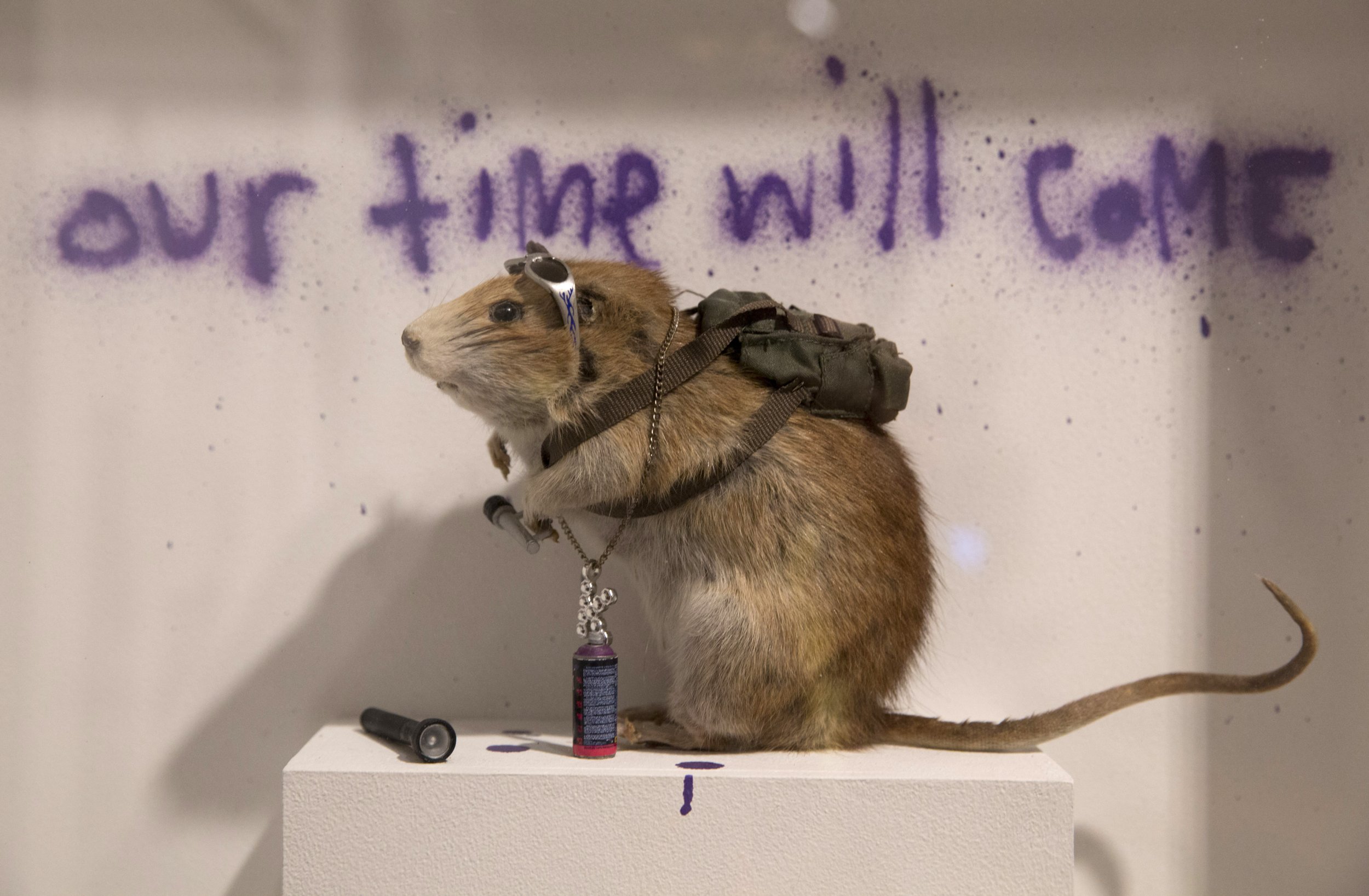
Counting rats is a tough job, but one Columbia University statistician set out to try. Jonathan Auerbach, who acknowledges in his study on the New York City rat population that "animals are terrible survey respondents," used 311 data on reported rat sightings to extrapolate the number of rats and their general locations around the city. (Although, as he points out, "this method will not account for rats living below ground or basement level.")
Through his research, Auerbach has busted a long-held myth: There are 8 million rats in New York. In fact, he found the city has a mere 2 million of the rodents, a ratio of about four humans to one rat. The neighborhoods with the largest concentration of rat-inhabited lots were Washington Heights, the East Village and Stuyvesant Town-Peter Cooper Village (just north of the East Village.)
First, a brief history of rats and why New York has so many. City rats belong to the species Rattus norvegicus, the same breed as a pet or lab rat. Generally, they grow to about 16 inches long and weigh 1 pound. Their colonies have 40 to 50 rats, and they enjoy traveling in packs. When it comes to procreation, rats give rabbits a run for their money: They can mate 20 times in six hours, and a female rat gives birth to 40 to 70 rats a year. They are extremely difficult to kill, and New York breeds perfect environments in which the rodents can thrive, complete with underground tunnels, lots of garbage and apartment buildings in which to scamper around discreetly.
For over a hundred years, nearly everyone has believed New York has about 8 million rats, a ratio of one human to one rat. This theory began in the early 1900s, when author and rat expert W.R. Boelter hypothesized that in England there was a ratio of one human to one rat. However, Auerbach points out that "the hypothesis was erroneously applied to New York City and is widely quoted to this day."
Many an expert has debunked Boelter's theory, including Dave Davis, who in 1949 determined the ratio was actually 36 humans to one rat. However, by the 1950s the Health Department began telling New Yorkers the ratio was 1-to-1 again, despite the research that proved otherwise. "The number-of-humans-equals-number-of-rats formula would not die," says Robert Sullivan, author of Rats: Observations on the History and Habitat of the City's Most Unwanted Inhabitants. "It is something people want to believe."
Even the United Nations has dropped the debunked stat, Sullivan notes. "People just love the number," he says. "It is just too good of a statistic, people really love it. People are excited to think there are so many rats around. It's a psychological discussion."
The psychology around actually wanting more rats is a topic to which Sullivan has given extensive thought, and he believes it has to do with "how we process fear and empathy."
"We want to say, 'Oh, we are overall OK, but there are problems.' It is about the 'other.' It is an acknowledgement that there is bad stuff out there, but I'm fine," says Sullivan. "No one ever has the rats in their house—they come from elsewhere. Rats always 'come from the neighbors.' Anecdotally, the higher your income level, the more likely you are to think rats come from somewhere else. Rats represent the presence of human garbage. We know there is a lot out there, but you don't want to deal with it."
Really, though, it doesn't matter much whether the number is 2 million or 8 million. And, says Sullivan, the debate over the number obscures the real rat issues in New York.
"The rat hoopla...takes our eyes off the prize, which should be dealing with rat infestations, which tend to occur in neighborhoods that have limited resources," says Sullivan. "Everyone is jumping up and down about the number of rats, but dozens of pest controls have been fired who could deal with infestations. So we have great [311] staff now...who to call when there is a rat, but there are lots of people who don't call because they have been bitten so many times by now."
For those living with an infestation and unable to pay for pest control, the citywide number makes little difference. Sullivan does note that even though rats are hard to kill, they can be fairly easily driven away. He suggests avoiding the use of just plastic bags for garbage (perhaps by buying a sturdy trash container) and filling any holes in the walls and floors of the apartment. He hopes the 2 million rat estimate will encourage citywide exterminations.
"The No. 1 way to take care of rats is to help other people: have a well-financed health department, well-financed sanitation department. It is the perfect barometer to see how your city works."
Uncommon Knowledge
Newsweek is committed to challenging conventional wisdom and finding connections in the search for common ground.
Newsweek is committed to challenging conventional wisdom and finding connections in the search for common ground.
About the writer
Polly Mosendz is a breaking news reporter for Newsweek. She was previously a staff writer for The Wire and associate ... Read more
To read how Newsweek uses AI as a newsroom tool, Click here.








